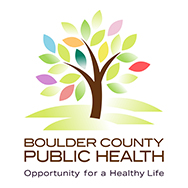Clean Up Mold and Fix the Problem
Water causes mold to grow in some building materials within as little as 48 hours. Building materials, such as the backside of drywall or carpet and padding, can harbor mold and bacteria, whereas ceramic tile and concrete floors are resistant. Because mold grows quickly, it is important to repair the source of the water leak immediately and remove all moldy building materials.
Control Potential Water Sources
To prevent mold growth, control the places where water can get in and cause damage. Water can enter the home and cause damage from the following sources:
- Outdoors – rain, snow, or plant irrigation systems allow water in through leaking roofs, windows, siding, crawl spaces, etc.
- Indoors – bathing/showering, cooking, indoor plants, or pet urine
- Building sources – excessive moisture allowed within a building during the construction/renovation process; temporary holes in roofing, walls, or siding
- Leaks – plumbing or washing machine leaks (especially from the hot water line), dishwasher backups or pump failure, leaking ice maker water line to refrigerators, toilet overflows, slow water pipe leaks inside walls, etc.
- Condensation – from poorly insulated windows or cold surfaces
Dry Wet Areas Within 48 Hours
Mold and bacteria grow quickly, and it is important to repair leaks as soon as possible. Microbe growth can increase significantly in as little as 48 hours, so it is important to dry water-damaged areas within 48 hours to prevent mold growth. Without moisture, mold cannot grow and will not be a health concern. If building materials that support mold and bacterial growth are not dried immediately, they must be removed. If not, mold growth occurs, and although the material is dried, the mold spores remain.
What to Clean
Before cleanup, stop the source of water. Otherwise, the mold will grow back.
- Non-porous materials like ceramic tile and plastics
- Semi-porous materials, like wood and concrete, are structurally sound
- Valuable items, such as picture albums or books, might be restored by a professional
What to Throw Out
Porous materials, such as drywall, carpet, padding, ceiling tiles, or insulation that has been wet for more than 48 hours, should be removed and disposed of.
- Drywall tends to remain wet, especially the bottom portion, even after the water source is gone. If drywall has been wet for longer than two days, remove the affected drywall approximately 3 feet up from the floor or 1 foot beyond the water line.
- If removing drywall, isolate the room or rooms where the demolition is being performed with plastic, and use a fan to create negative pressure in the room.
How to Clean
- Use a soap, detergent, or 10% chlorine bleach solution.
- Use the gentlest cleaning method that effectively removes the mold and limits the dust created.
- After the area is cleaned, dry it thoroughly.
- Vacuum the cleaned materials with a high-efficiency particulate (HEPA) air cleaner to remove difficult-to-see mold particles.
- If you are sensitive to mold, you can use a “Type N-95” respirator to limit your exposure to airborne mold during cleaning. These are available at many hardware stores and on the Internet.
- If mold reappears, the source of the water has not been eliminated.
- Consider hiring an environmental health professional or industrial hygienist to define the problem and a trained contractor to clean it up. Checking references to make sure the contractor has experience cleaning up mold.
- Contact an industrial hygienist or environmental consultant.
- Ask the contractor to follow the recommendations of one of the following:
Mold Cleanup Quality Assurance
Measures to ensure the quality and effectiveness of remediation should be taken regardless of the project size. Evaluations during and after remediation should be conducted to confirm the efficacy of remedial work, particularly for large-scale remediation. At a minimum, these quality assurance indicators should be followed and documented:
- Identifying and eliminating the underlying moisture problem.
- Ensuring that isolation of the work area is appropriate and effective.
- Mold removal and worksite cleanup will be performed according to the site-specific plan.
- Properly address any additional moisture or mold damage discovered during remediation.
- Upon completion of remediation, ensure that surfaces are free from visible dust and debris.
- If environmental sampling was performed, ensure that a trained building or environmental health professional evaluated the results.
For more information, see the Environmental Protection Agency (EPA) document Mold Remediation in Schools and Commercial Buildings.



